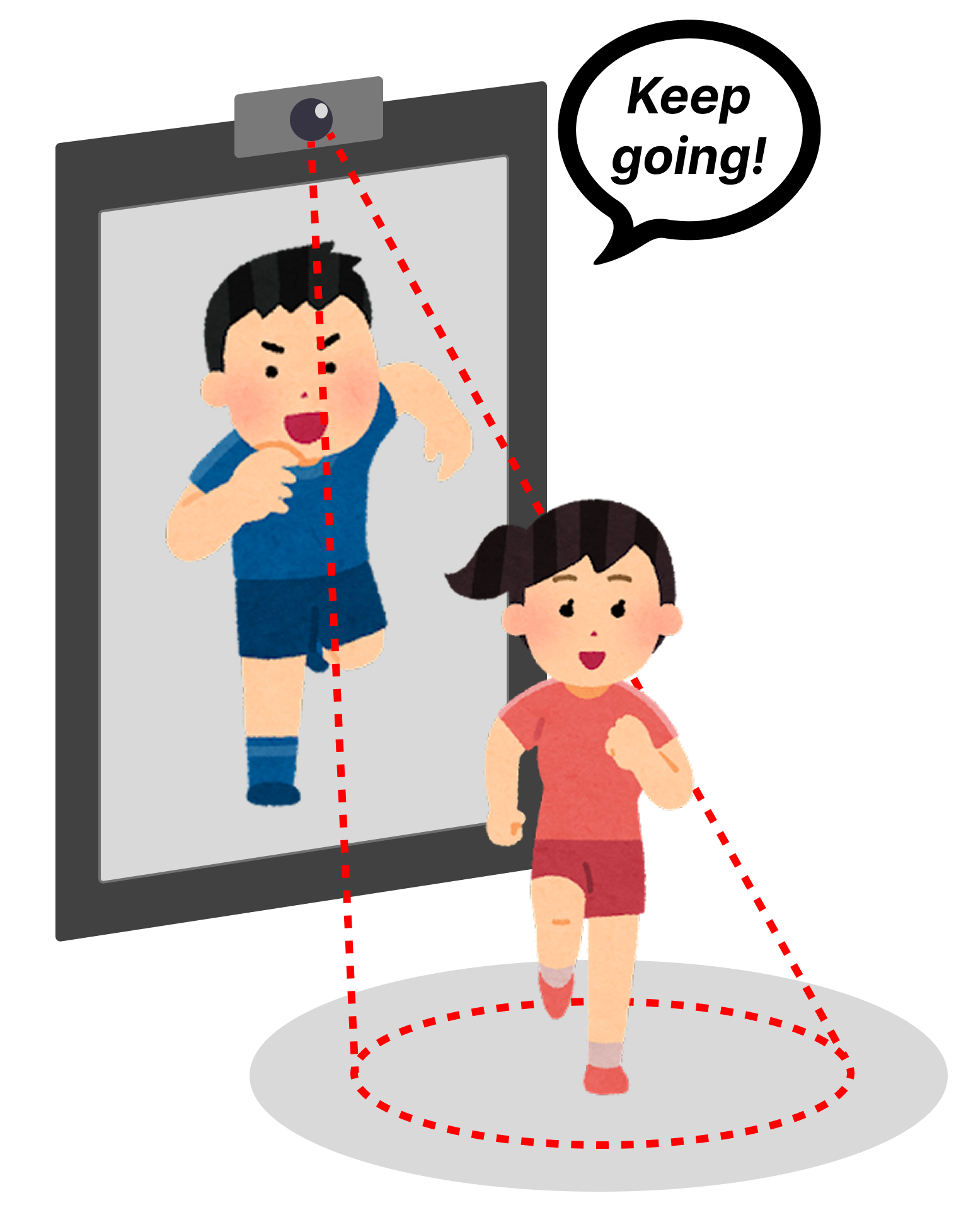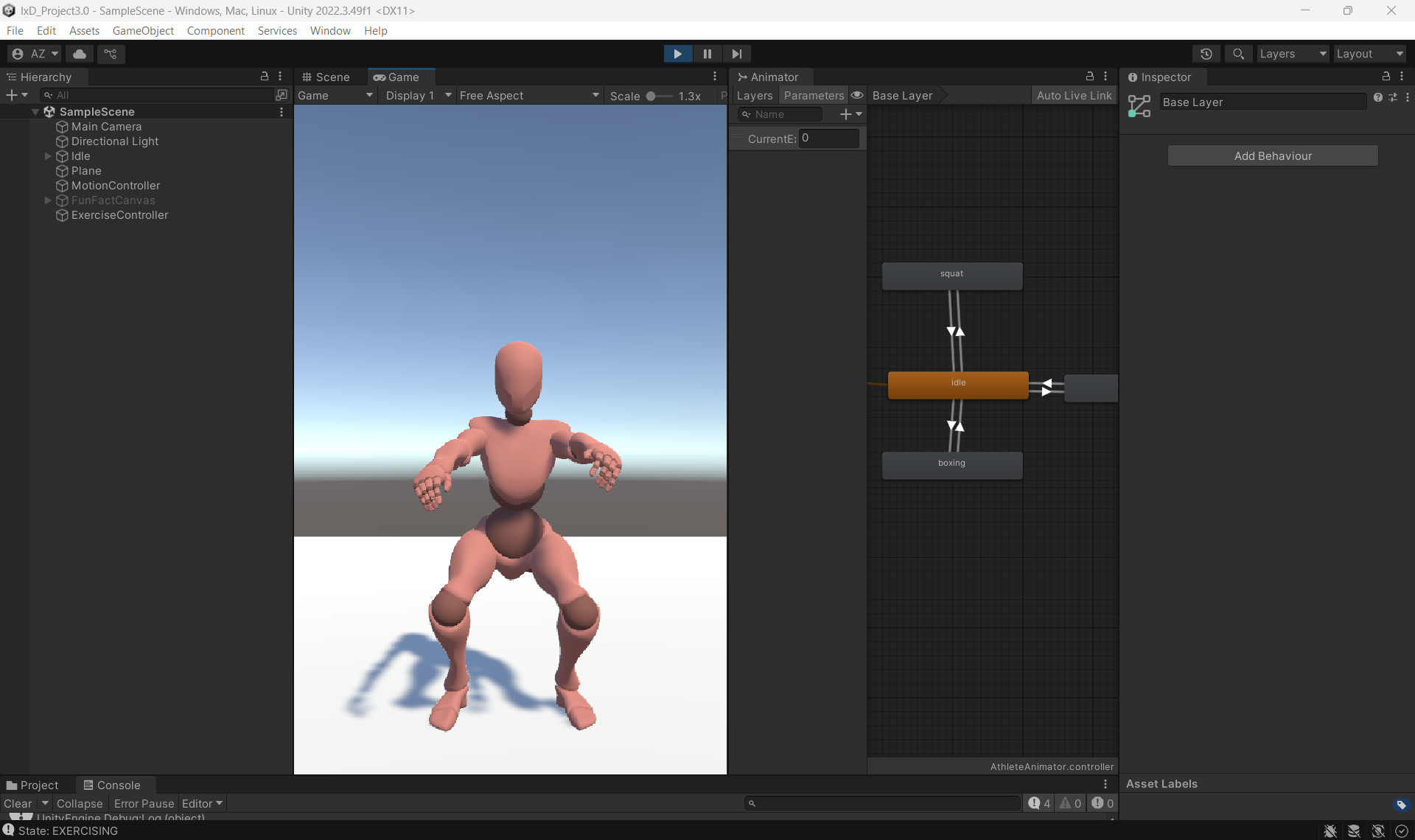Designing the interactive exhibit Train with an Athlete for Gothenburg Sports Museum
Role: Interaction designer
Duration: 2.5 months
A museum in need of modernization
This is a group project done as part of a master’s program at Chalmers University of Technology. For this year’s iteration of the course, the university is collaborating with Gothenburg Sports Museum in Sweden and the Olympic Museum of Lausanne in Switzerland. As groups of students, we were tasked with designing an interactive exhibit to contribute to Gothenburg Sports Museum’s efforts of modernization.
Currently, the sports museum is struggling with a lack of interactivity and data management, and an overwhelming amount of historical artifacts with little to no explanatory text or visitor guidance. Overall, the museum’s visitors are restricted to older generations, with management struggling to make their museum interesting to younger ager groups. Our goal is to create an engaging, interactive exhibit, utilizing modern interaction design tools and methods, with the aim of helping make Gothenburg Sports Museum more exciting to explore for a broader audience and introducing younger generations to Swedish sports history.
Inspiration: Museum visits
Before deciding on our direction, we took some field trips to see what sort of interactive solutions exist today. Our first trip was to Universeum, a science center in Gothenburg with a wide range of different interactive and non-interactive exhibits illustrating and teaching different scientific fields. Afterwards, we visit the World Culture Museum’s History of Games installations to get inspired by their way of using interaction in exhibits on games, given that sports may carry a similar tone of active engagement. Lastly, we had a visit at Gothenburg Sports Museum itself, to see firsthand the current state of the museum and get ideas for what could be improved and added onto.
Research: Swedish Sports History
Given that we are designing for Gothenburg Sports Museum, our design necessarily needs to reflect and represent a side of Swedish sports history. To determine the direction of our exhibit, we did some background research on famous Swedish athletes and sports achievements. A large part of this research took place in the sports museum, where we surveyed the different rooms and artifacts for athletes and events that are particularly important for Gothenburg. We found one of these important athletes to be Ingemar Johansson, world heavyweight boxing champion and pride of Gothenburg.
After talking to museum staff we learned that older visitors are particularly nostalgic about Johansson, but after speaking to our peers we found that he was unfortunately not very known among younger generations. Since Gothenburg Sports Museum has quite a bit of material on Ingemar Johansson, we decided he would be a good subject for our exhibit.
Ideation
After being satisfied with our background research and museum visits, we sat down and some rounds of Crazy 8s to brainstorm different ways of teaching visitors about Ingemar Johansson. We converged on one idea we’ve dubbed Training with an Athlete: Ingemar Johansson. Our idea involves have a life-sized screen with a humanoid model resembling Ingemar Johansson projected on it which visitors can approach. On detecting their movement, the model begins Johansson’s exercise routing, prompting the visitor to follow along with his movements. After following a certain exercise for a short duration, visitors are presented with fun facts about Johansson.
The goal of this exhibit is an educational one, to teach visitors about how Johansson would exercise between matches as well as obscure fun facts about his life that people would learn otherwise. Additionally, the exhibit aims to facilitate a shared moment between the visitor and the athlete, potentially stirring nostalgia for older generations and interest for the younger ones. Using different illustrative tools, we sketched out what the exhibit would look like in ordered to plan the components we would prototype.
Design
The core of our project is a humanoid 3D athlete model and its exercise animations, which we acquired from Mixamo’s open source library of animations. To control the flow of our exhibit, we used Unity Game Engine with a state controller script to alternate the model between idle animation, exercise animation, and fun fact screen states states. We also wrote a pixel difference motion detection script that allows the user to trigger state activations using a webcam, which is similar to what we are aiming for in a real museum setting. We used Figma to design the fun fact screens that will become visible at the end of every exercise move animation.
We decided to use a projector with a rear projection screen to show the model at an accurate size and still allow the visitor to stand in front of it, without risking occlusion of the screen.
A limitation of this project is that there is no accessible 3D model of Ingemar Johansson available, and well-designed models of boxers are beyond the budget of the project. For this reason, we had to get crafty…
Next, we designed the fun fact info screens to appear between exercise sets. These had to have some form of educational content but still appear interesting to the visitor as they wait for the next set to begin.
Exhibition
Our completed installation was exhibited at the IDXPO 2025 Exhibition. Many visitors of different ages stopped by to try out the installation, and most of them offered words of praise. There was something in it for everybody, where kids enjoyed the chance to move around and pretend to box with an athlete, while older visitors had a nostalgic experience with an athlete that defined their youth. The biggest suggestion for improvement was to add sound, either for feedback to to bring Ingo to life with sound effects.
Overall, this project was a very fun learning experience. I got better acquainted with Unity and C#, and I also got to experience setting up rear-projection for a museum installation. The concept itself was fun to work on, and we were glad to have created something that people found enjoyment in.










